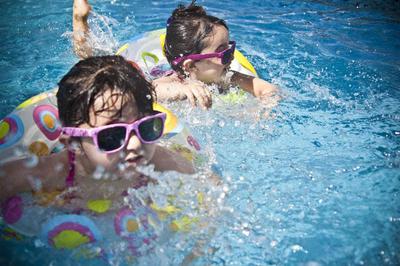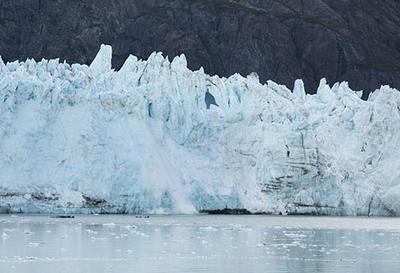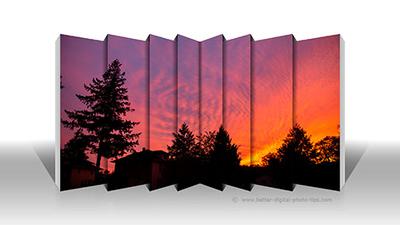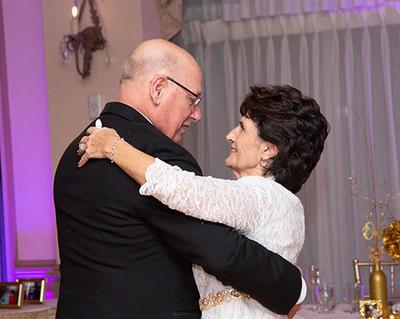HOW TO POSTS: LIGHTING AND COMPOSITION
Poolside
"Just want to take pics of my kids by or in the pool. Any advice regarding exposure? I have a canon 50d"
Great question on how to photograph a subject and photography lighting. The lighting can be very tricky and will vary depending on if the pool itself becomes a light source in your photo or if it is more of a background.
In terms of exposure, if your child fills most of your frame when you compose your photo, your auto exposure should perform fine.
Your Canon 50d may have a setting which will allow you to use a center-weighted metering, which will look at mostly your child in the center of your photo to evaluate for the best exposure.
Use your camera's fill flash if there is strong back lighting when you make your exposure.
I have done family portraits where my group was across the pool from me in the shade, but my subjects were lighted by the blue water in front of them.
This has a big effect on the color balance, which is why I always shoot in raw mode so that I can adjust my color when I do my photo editing later.
Direct sunlight hitting your subject's face may cause squinting and harsh unattractive shadows on their faces. I am a big fan of having my subjects in the shade for posed portraits.
I often shooting pool scenes near sunset if no shade is available during the mid-day.
If you are shooting more candid, action type of shots with your children playing then use a sports setting to freeze the action. You can shoot during the day and you'll have plenty of light to get sharp, well-focused photographs.
Learning how to photograph people takes some experimenting, so vary your approach and evaluate what results you got in each situation.
Shoot more photos. Shoot better photos.
Bruce
p.s. If you want more information on color balance, you might enjoy reading this: What is Color Temperature?
Glaciers in Alaska
by Paul Bosselait
(Las Cruces, NM USA)
I will be going on a cruise to Alaska in Sept, and I was wondering how to get good glacier shots. I have a Nikon D7000 with the 18 - 105mm 3.5-5.6 kit lens and a 70-300mm 4.5-5.6 telephoto. I plan on using a polarizing filter and using a monopod (but I've heard that there could be some ship vibration transmitted through the monopod). Any suggestions will be appreciated.
Paul,
Thanks for your question. You've got three things going for you already: (1)A great camera, (2)a good range of zoom coverage with your two lenses and (3)the awareness that you could have an issue with vibration-caused blur.
I once shot an interior of a house in Rochester, New York with a 4x5 view camera (and transparency film back then) and heavy duty Gitzo tripod. It was a great shoot except that I had to return and do the photography again because of blurriness from vibration. As it turned out, the vibration was caused by the home's heating system.
I remember that I felt no discernible vibrations but my exposures were a few seconds long and I didn't discover the lack of sharpness until several days later when I viewed the developed transparencies with a magnifying loupe.
You likely won't have a second chance to go back and shoot the glaciers again. The fact that you are aware of the issue ahead of time is a big advantage for you. I've never been a fan of image stabilization.
Nikon's VR system may be helpful, but the vibration frequency and your shutter speed combinations may give you mixed results. Hand-held photography with a high shutter speed is always my favorite if I am in a moving situation.
Assume a nice steady monopod position: How to Use a Monopod and make an exposure, then quickly lift your monopod slightly, exhale , relax and take another.
Your body may act at least somewhat as a vibration-absorbing mechanism. The magnitude and frequency of the vibrations as well as the size of your ship are the unknown factors.
If you miraculously have the opportunity to leave the big ship and travel in a dingy or temporarily turn off the engines, then of course it will be your opportunity.
Good Luck and please report back so we can all learn what you discover. The best part of digital photography is you can experiment while shooting and not have any worries about developing or printing costs. Just have plenty of battery power and memory!
Shoot more photos. Shoot better photos.
Bruce
Comments for Glaciers in Alaska
|
||
|
||
Black people in bright sunlight against a white church.
How do I expose for a situation like this. I need to keep the features of the subject without blowing out the background. An exposure meter maybe . . .
Thanks for your questions about photography lighting. Having a separate light meter would be useful to find the exact Light Ratio of your scene but isn't going to help change the basic challenge for you in this situation.
Whenever you have a high contrast situation it can be a difficult. Digital camera sensors do have a limit in the dynamic range of what they can capture within one single exposure.
Whenever you have a dark subject, whether it is a dark complexioned subject, a dark-haired dog or any dark subject against a very light or brightly-lit background you have a very contrasty scene.
Sunlight hitting your dark subject helps provided that sun isn't hitting the background as well. It sounds like it is hitting the church in your situation.
HDR photography is a technique that combines two or more different exposures into one final photograph.
One or more underexposed images are combined either in the camera (with the most modern digital cameras) or after the fact with software with one or more overexposed images.
The images are combined to compress the highlights and shadows into one photograph that produces better details in the shadows and the highlights.
The problem is that when photographing people or any other live subject, they are not going to be exactly the same in the each of the different exposures.
A few of the very newest cameras do have an HDR setting that will take several exposures and combine they automatically.
Using a very strong fill flash can help sometimes, but there are several variables such as the power of your flash, the distance to the subject, the shutter speed, and the amount of light already hitting your subject as well as the background.
Ultimately the best solution is to move your subject so that the background is not so bright, but I understand that in many cases, the background is an important element in your composition.
This may not be the answer to your lighting question that you were hoping for, but I hope it helps.
Happy Shooting
Bruce
p.s. If you submit a photo I can better comment on the exact situation.
Comments for Black people in bright sunlight against a white church.
|
||
|
||
Best Filter For Photographing Sunsets
"What would be a good setting to use. What type of filter should be used?"
Thanks "jj the science guy" for your question on how to photograph sunsets. I'll answer the second part of the question first: None. I would not use any filter for photographing sunsets. If you really want to adjust the color, you can do it later with your favorite photo editing software.
Here are my five top tips for sunset photos:
1. Use manual focus. Sometimes camera auto-focus mechanisms fail when shooting directly into the sun.
2. Bracket your exposures. Take a series of underexposed through overexposed photos and pick your favorite ones after. Sunsets vary greatly in the lighting conditions depending on the time and clouds and other atmospheric conditions.
Underexposed skies are a bit more vivid in color than overexposed skies.
3. Use a tripod or at least a monopod to make sure your pictures come out sharp. As the sun sets, the amount of light falls rapidly and a longer shutter speed is required to get a good exposure.
4. Use a low ISO setting to get the best quality and least amount of noise especially if you do use a tripod.
5. Use good composition rules (found on this Digital Photo Tips web site. Often silhouettes add a great deal of interest to your sunset photos.
Try using different zoom settings and consider including other subjects in your composition besides just the sunset, like I did in the included photo above.
Some photographers use graduated filters for photographing sunsets. Either the sky is overexposed or the foreground is often underexposed because of the big difference in brightness. I prefer to make adjustments afterwards with software.
p.s. I like to plan ahead and look for great locations in the event that a good sunset appears imminent. I shoot manual exposure, use a tripod when possible, and cheat by looking at my camera lcd screen as well as the histogram and quickly adjust as necessary.
p.p.s. In most situations, underexposing an f-stop or two from the camera's recommended exposure gives you the best sunset pictures.
Shoot more photos. Shoot better photos
Bruce
How to photograph zoo animals without the cage bars
by Ruth Bolderson
(Leesburg, Fl, USA)
"I would like to photo zoo animals and have the cage bars disappear or fade out. How is this done with a digital with a digital point & shoot and a digital SLR?"
This is a good question about how to photograph zoo animals without the cage bars showing. It is difficult to answer because there are so many variables involved.
The distance from the camera to the cage bars and the distance and size of the subject are both very important.
There are ways to using photo editing software after the photo is taken to eliminate the cage bars, but that can be quite involved. It is always better to avoid or reduce the interference of the bars in your photo to start with.
One technique is to move your point and shoot or digital SLR slightly to the right or left and use the strongest telephoto setting to include less cage bars in your photo.
Getting as close as possible to the bars will also help make them out of focus as much as possible.
Read some of the articles on controlling depth of field on this digital photo tips web site to get a better understanding of that one. What is depth of field
Also, can you send or upload a photo example of yours? I may be able to fix it or at least give you a more specific photo technique, depending on the situation that you are facing?
Let me know,
Photo TipMan
p.s. I have used the "clone" tool in Adobe Photoshop to eliminate out of focus distractions in the foreground of photos.
Comments for How to photograph zoo animals without the cage bars
|
||
|
||
pro sports photography
by Jane
(Philadelphia Suburbs)
"Hi. I go to a lot of Phillies games (day and night)and take many photos. Most of them turn out blurry. Sometimes the athlete in the photo is blurry, and the center field wall is in perfect focus, even though the athlete is perfectly centered in the shot. I always leave the cameras on Autofocus, since I don't have much experience with advanced photography. I should also mention I don't have sports settings on my digital cameras. One is a 10x zoom and one is a 26x zoom.
Can you help me?"
Thank You.
Hi Jayne, Good question on a problem I am sure many photographers have for sports photography. Is it possible you could submit one of your photos for me to evaluate?
What camera and do you know what the shutter speed and f-stop were?
You may have two issues going on to cause your blurriness, focus and motion blur, and it could be one or the other or both depending on the specific situation in each photo.
In the meantime here are two articles that may help you get a better grasp on this:
Photo Mistakes
Avoid Blurry Pictures
I have taken my share of blurry photos and it can be frustrating. I can respond better if you have more information specific to a particular photo example of blurriness.
Thanks,
p.s. 26x zoom is extremely powerful and often requires the use of a tripod or monopod to prevent blurriness.
50th Wedding Anniversary Photos
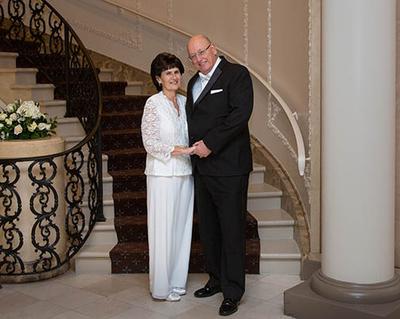
50TH Wedding Anniversary
I have taken photography classes and have not taken any photos yet, except photos for my own use and enjoyment.
I was asked today to take photos of a friend and her husband for their 50th Wedding Anniversary poses.
I am not sure what to include, poses, etc. Any advice for props, etc? they have a beautiful brand new brick home with beautiful landscaping with a waterfall. I have also told them they are the first ones I will have done this for and I would be happy to do it, just no promises.
She has seen the many photos I have taken and enlarged at our cabin and loves them.
Any advice would be greatly appreciated for this first timer.
thanks.
Thanks for your question about wedding poses. I am sure you are quite anxious to do a great job for them.
Since your happily married subjects are likely in their 70's you will likely not do the same posing as a couple in their 20's. The poses above are simple. For indoor photography, I bounce my flash upward against the ceiling and check my camera's histogram to make sure I get a good exposure. I don't know if you are covering an event like renewal of their vows or just a portrait session of them as a couple.
I will be doing a series of articles soon on posing couples and group photos of two people, but it likely won't be done in time for your photo shoot.
Also do a Google Image search on "elderly couples" and similar words to view some samples. The web is a great source of portraits to give you some good ideas on poses.
If you have time buy a book on posing couples or on wedding or portrait photography at Amazon: Photography Books
If possible I would scout out the location at the same time of day you are to do the photography for them. I am big on taking advantage of natural lighting when shooting outside. If you can try some poses of someone on a day before you photograph them, you will learn a lot about shooting at that location.
Have fun and make it fun and relaxing for them and you will get great expressions too!
Good Luck,
Bruce
